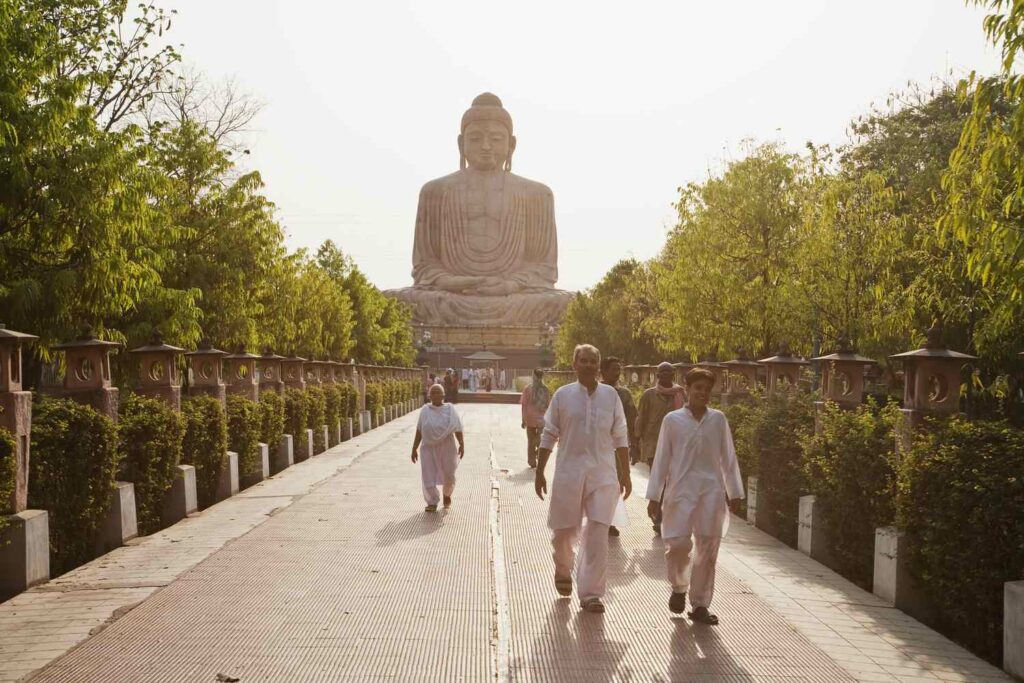Bodh Gaya, India: The Sacred Heart of Buddhism

Nestled in the verdant plains of Bihar, amidst the tranquil banks of the river Phalgu, lies the hallowed town of Bodh Gaya – a place revered by millions as the spiritual epicenter of Buddhism. It is here, under the Bodhi tree, that Prince Siddhartha Gautama attained enlightenment over 2,500 years ago, transforming into the Buddha, the Awakened One. Today, Bodh Gaya stands as a testament to the enduring legacy of the Buddha’s teachings, drawing pilgrims, scholars, and seekers from around the world to its sacred precincts.
Historical Significance: The history of Bodh Gaya is intertwined with the life of Siddhartha Gautama, who renounced his princely life and embarked on a quest for spiritual enlightenment. After years of wandering and meditation, Siddhartha arrived at Bodh Gaya and resolved to meditate under the Bodhi tree until he attained enlightenment. On the full moon night of Vesakha, Siddhartha experienced profound insights into the nature of suffering and the path to liberation, thus becoming the Buddha.
The Bodhi Tree: The Bodhi tree, a descendant of the original tree under which the Buddha attained enlightenment, is the focal point of veneration in Bodh Gaya. Pilgrims from all corners of the globe flock to the Mahabodhi Temple complex to pay homage to this sacred tree, whose branches offer shade and solace to those seeking refuge from the heat of worldly desires.
Mahabodhi Temple: At the heart of Bodh Gaya stands the magnificent Mahabodhi Temple, a UNESCO World Heritage Site and one of the oldest brick structures in India. Built by Emperor Ashoka in the 3rd century BCE, the temple enshrines the Bodhi tree and marks the spot where the Buddha attained enlightenment. Its soaring spire, intricately carved pillars, and ornate gateways reflect the architectural grandeur of ancient India and the enduring reverence for the Buddha’s teachings.
The Great Vihara: Adjacent to the Mahabodhi Temple is the Great Vihara, a sprawling complex of monastic cells, meditation halls, and libraries that serve as a center for Buddhist learning and practice. Monks and nuns from various Buddhist traditions reside here, dedicating themselves to the study of scripture, meditation, and service to humanity. Visitors can participate in meditation sessions, attend Dharma talks, and engage in spiritual practices under the guidance of experienced teachers.
Pilgrimage Circuit: Bodh Gaya is home to a plethora of sacred sites and monuments associated with the life and teachings of the Buddha. The Animeshlocha Stupa, where the Buddha is said to have spent one week gazing in gratitude at the Bodhi tree after attaining enlightenment, and the Ratnachankrama (Jewel Walk), where he walked in meditation after his enlightenment, are among the most revered pilgrimage sites in Bodh Gaya.
Diverse Buddhist Traditions: Bodh Gaya is a melting pot of Buddhist traditions, attracting followers of Theravada, Mahayana, Vajrayana, and other schools of Buddhism from across the globe. Monks, nuns, and lay practitioners from countries such as Thailand, Sri Lanka, Japan, Tibet, and Bhutan converge here to pay homage to the Buddha, receive teachings from eminent masters, and participate in religious ceremonies and rituals.
Cultural Exchange: Bodh Gaya is not only a place of pilgrimage but also a hub of cultural exchange and dialogue, fostering understanding and harmony among people of diverse backgrounds and beliefs. The annual International Buddhist Conclave, held in Bodh Gaya, brings together scholars, practitioners, and dignitaries from around the world to discuss issues related to Buddhism, peace, and social welfare.
Service and Compassion: Inspired by the Buddha’s teachings of compassion and altruism, numerous charitable organizations and social service projects operate in Bodh Gaya, providing healthcare, education, and humanitarian aid to the local community. Visitors are encouraged to participate in volunteer activities and contribute to the welfare of the less fortunate, embodying the spirit of selflessness and generosity that lies at the heart of Buddhism.
Preserving the Legacy: As custodians of Bodh Gaya’s rich heritage, local authorities and Buddhist organizations are committed to preserving its sacred sites and promoting sustainable tourism practices. Conservation efforts, including restoration, maintenance, and landscaping projects, are carried out to ensure that the town’s cultural and natural treasures remain intact for future generations to cherish and enjoy.
Conclusion: Bodh Gaya, with its sacred sites, vibrant monastic community, and spirit of compassion, is a beacon of light and wisdom in the modern world. As pilgrims and visitors embark on a journey of self-discovery and spiritual awakening in the footsteps of the Buddha, they are reminded of the timeless truths of impermanence, suffering, and liberation that lie at the heart of Buddhism.
Amidst the serene surroundings of Bodh Gaya’s temples and monasteries, one finds a sanctuary of peace and enlightenment, where the teachings of the Buddha continue to illuminate the path to awakening for all sentient beings. As we celebrate the legacy of Bodh Gaya and its significance as the birthplace of Buddhism, let us also strive to embody the Buddha’s teachings of compassion, wisdom, and loving-kindness in our lives, and work towards building a more peaceful and harmonious world for future generations.




